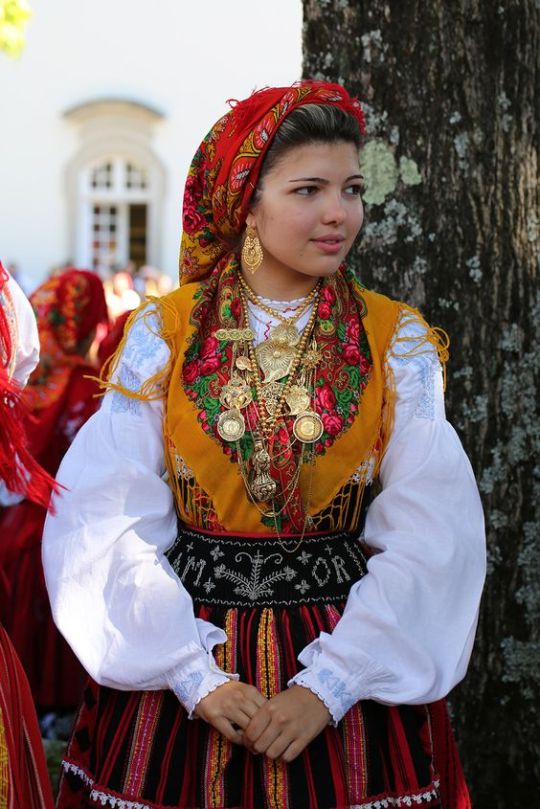#portuguese traditional costume
Text
My beautiful country, of traditional values and patriotic love 🇵🇹
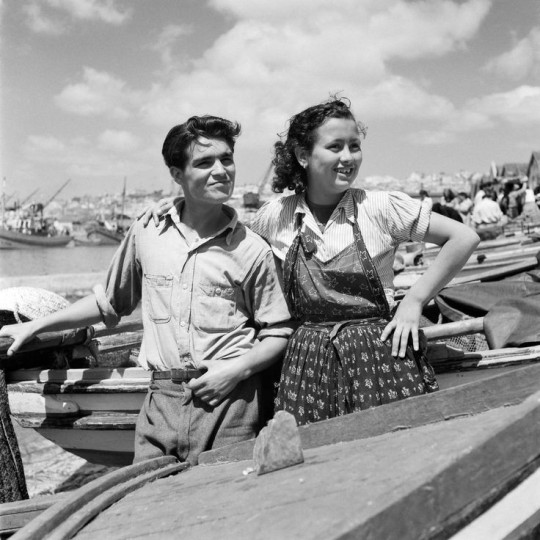
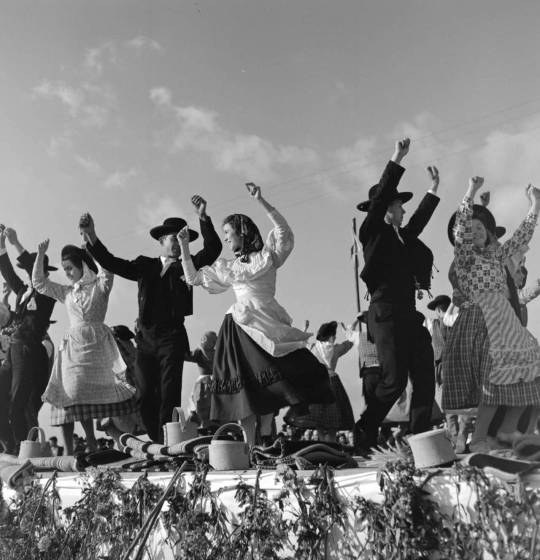
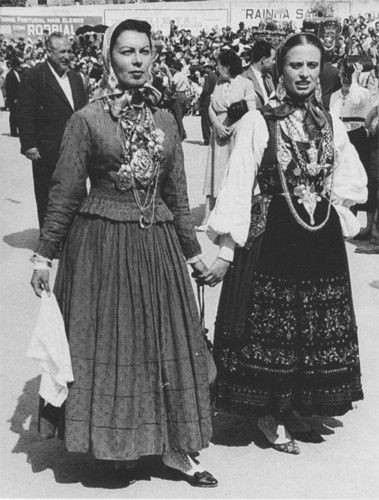

#conservative#tradition#homemaker#tradgirl#catholic#tradwife#50s#christian#mother#wife#portuguese#português#portugal#estado novo#traditional values#traditional costume#rancho folclórico#folclore#folkwear#folklore#Spotify
18 notes
·
View notes
Text
The Caretos of Podence
Happy Carnaval!! Time for another cultural ramblie because I haven't done this in a while!!

(I just think they're cool)
This was originally gonna be about multiple Carnaval traditions in Portugal, like my Halloween post, because I wanted to talk about a really beautiful festivity in my city but then I realized it was related to an entirely different holiday and I wasn't gonna scrap this idea (I'll do that one in August, I guess??). So I decided to make a post about the Caretos of Podence because I just really vibed with them.
disclaimer! None of this is from lived experience, just online research (although I tried to use sources directly related to it, specifically the Casa do Careto website). I am not from Trás-os-Montes at all and have little contact with this. Just like in my first cultural ramblie, this is just me trying to better connect with my own culture and sharing what I find with anyone who's interested. If you see any errors or want to add anything, feel free!! I'm always happy to learn!
Okay, but before we begin: what exactly is Carnaval?
You might have heard of Brazil's Carnaval. Portugal's is way less hardcore but still culturally important (although some brazillian-style Carnavais are celebrated here).
The actual day of Carnaval is the day before Ash Wednesday, but it usually lasts about a week or 3 days in more urban areas (Carnaval break is a real thing that schools have). The general objective is to have an all-out celebration before Lent starts because, after that, you're not supposed to celebrate until Easter rolls around.
The Caretos
The village of Podence is in the middle of Trás-os-Montes, somewhat between Mirandela and Miranda do Douro. It is mostly known for this celebration, which lasts for about a week.
The name "caretos" means something like "big faces" and comes from their very recognizable masks. They're made of either leather or metal and are meant to completely obscure the identity of the wearer. The costumes are made of rows of coloured wool and are usually made by the community. The red, yellow, and green pattern is not mandatory and it can have many different colours, but it's the most common since it's the colours of the flag. On top of the costume, they wear a lot of bells: smaller ones attached to the straps on their chest and 4 to 8 bigger cowbells tied around their waist.
During the celebration, the caretos dance through the town, accompanied by the jingling of their bells. Traditionally, the caretos were young men who chased after single women, but today anyone can wear the costume and chase after anyone they please. They also go around stealing any easily grabbable chorizos left hanging from smokehouses, and use wooden staffs to propel their jumps higher.
On the last day of Carnaval, the Entrudo (a giant figure of a man) is burnt to draw away the bad things of the old year and let in the next. Like this:
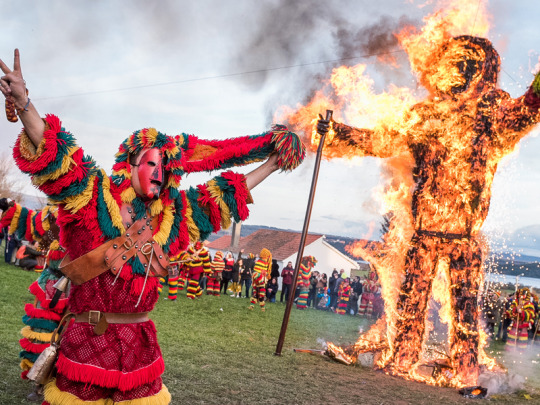
This celebration has pagan roots, although none really know exactly where its origins lie. People seem to point to it being a pre-roman festivity, but we have few sources to go from. The most probable explanation is that it was a fertility ritual connected to the agricultural cycle, since this is generally the time in which farmers can start planting again after the winter.
I hope you enjoyed this little ramble. Because I very much did. Here's some more pictures:

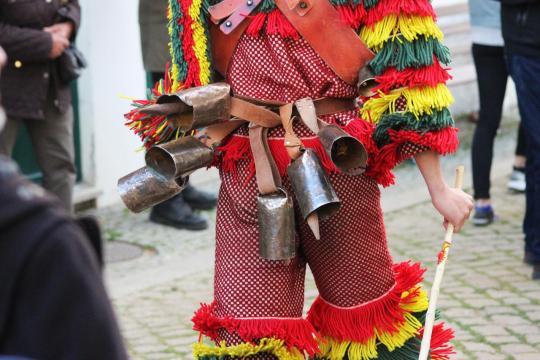
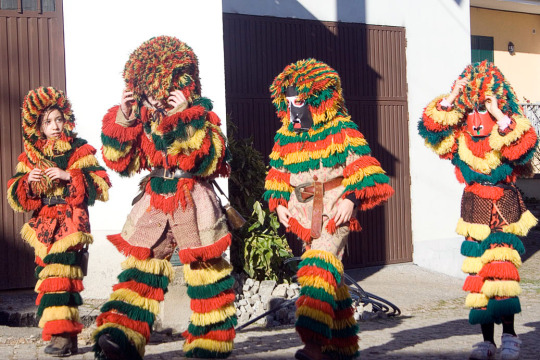

#fun fact: they made a board game about this#a thing i've never seen but DESPERATELY want to see a Careto do is a body wave#i know that costume is gonna look soooo satisfying doing that#and sound satisfying too tbh. like those cylinder thingies at the carwash.#i've never gone to see the Caretos bc i'm broke as hell but i want to someday#i have another cultural ramblie planned for tomorrow btw!! it's gonna be kinda different but still cool#happy carnaval#portugal ramblies#portuguese tradition#caretos de podence#portuguese folklore#idk how common carnaval is or isn't in other countries. sorry if the intro was kinda bad in that regard
10 notes
·
View notes
Photo
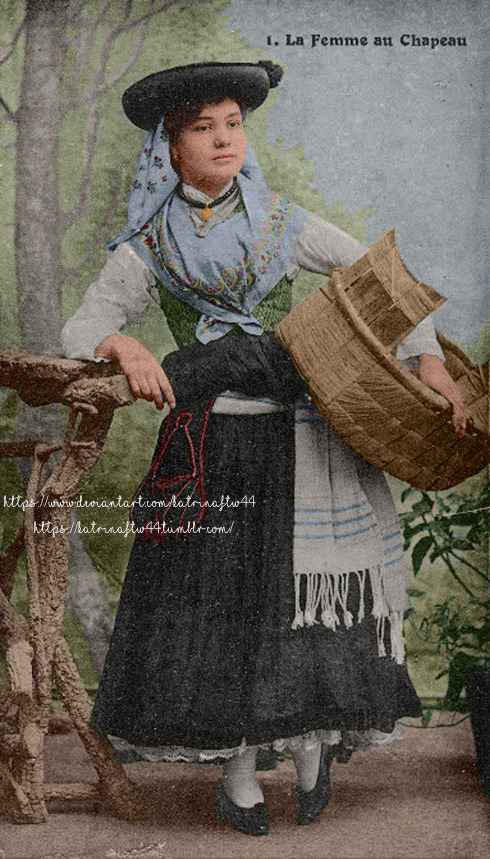

Colourization I did of a postcard of a Portuguese woman wearing traditional clothing.
I got the original from delcampe, so I don’t have much info on it.
#portugal#portuguese#português#history#folk costume#colorization#colorized#portuguese history#traditional dress
2 notes
·
View notes
Note
What are your favourite Portuguese traditional clothing? The one I see the most as the "main" is the one from Minho, but I'm sure there's others right.
there's tons, but minho is my favourite, specifically the bride's outfit which is all black. but minho is somewhat dear to me bc I grew up visiting minho a lot and as a kid I always wanted to dress up like one lol
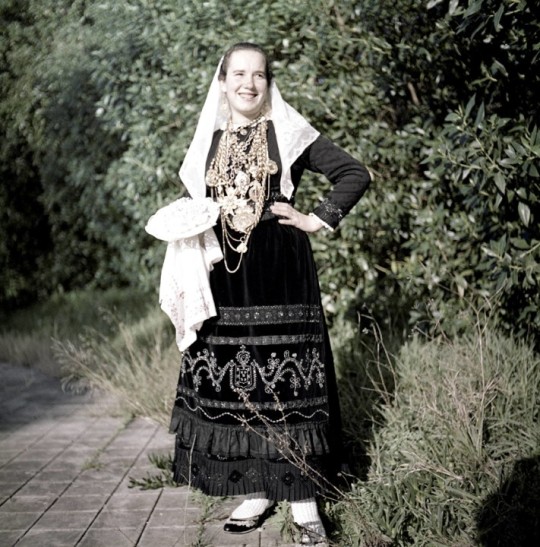
Notice this is specifically from viana do castelo, i sincerely am not sure if this is a typical costume around that area (I'd say probably all the way to Barcelos and something like that, but that probably is about it)
I really dig the traditinal one from algarve, the old one, which was banned (literally made illegal) cause it's basically a burka, and that's not exaggerating, it comes from moorish times

and varinas of lisbon have a special place in my heart too
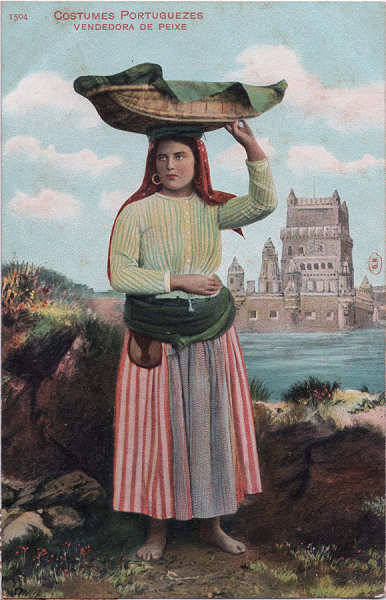
40 notes
·
View notes
Note
Okay, so gonna request a G!P!wanda with a brazilian!reader
Wands doesn't know much about reader's culture/costumes, so reader shows her the basics and reader teaches wanda a little bit of candomblé for her, reader in the middle of it says that she wants little kids running around the house wanting a big family for her to care. so our little witch does something about it.
Reader has a heavy accent, so wanda goes crazy w it
These are some Portuguese pet name's:
Meu Amor (Same as Mi Amor, "My Love")- Amor (just Love);
Amorzinho (they are also 'Love' but in a more affectionate way)-
Mozão (also love, kinda similar to "amorzinho" but more intimated)-
Gato/Gata (Said when someone looks attractive or hot, first one for boys, second one for girls, but the first one can be used as gender neutral);
Gatinho/Gatinha (same as Gato, but in a more affectionate way, first for boys, second for girls)-
Querido(boys)/Querida(girls) (Same as "Dear/Darling")-
Meu Bem (similar to "My Love")-
Vida (means "Life", as if they are "your life")-
Lindo/Linda (same as "Pretty", first one for boys, second one for girls)-
Docinho (Similar to Honey)-
Paixão (means "Passion", they make you passionate)
(There is more you can add if you want, btw im brazilian so its hard to see in fanfic an reader who is from my country)
meu amor.
eu amei seu request???? eu sou brasileira também então eu adorei escrever isso! eu não sei muito sobre candomblé então pra não desrespeitar nada eu coloquei bem pouco e oque eu coloquei pesquisei no google, sinto muito e espero que você goste ;)
(I loved your request???? I'm Brazilian too, so I loved writing this! I don't know much about candomblé so for don't disrespect anything I put very little and what I put I googled, I'm sorry and I hope you like it ;)
words: 900
warnings: pure fluff but suggestive content, wanda g!p!
Since you meet Wanda Maximoff you knew she preserved her origins, her accent and habit of talking about her culture and her childhood in Sokovia was the proof of it, and so was you about yours.
Like Wanda, you’ve always loved to share your stories about your past life in Brazil, raised by your family with the amazing culture of the country, you couldn’t ask for better childhood memories.
That was something you both liked to share, actually, Wanda loved to hear about how you grown up in a big house close to the beach, how you watched your cousins play football together every weekend and how you missed those days, how you missed Brazil.
You even told her about your religion, something she really get interested in, she could see that was something you were really passionate about, telling her about your rituals and how your whole family participated too.
She also loved your accent, that was something she made sure to let you know since the day you’ve meet, she loved to hear you talk and when you have to repeat for her understand completely, so does she when you ask.
Even though you were not from the same country, you both identified to each other for being foreigns, learning a new language and having to deal with racist people everyday.
But, with all the difficulties, you find care in each other’s arms, love, as they say, being sharing stories about your life, cooking traditional food from your country for each other, smiling about how cute your accent is or simply falling in love.
For Wanda, that was the best part of it, since she became an avenger, meeting you was definitely the best part of her life, one thing that she made sure to tell you when you two started dating. She alsos makes sure you know how much she loved hearing you call her pet names in your mother language.
Her favorite would be “meu amor” that reminds her of the sitcoms she watches with you, that have a special place in her heart, and you loved it when she called you “detka” that means baby in her language.
Wanda knew she loved sharing it with you, but she wanted more, since she was a kid, she always wanted a family, with two kids, twins, like her and Pietro, and a big house, with ceiling and a backyard for the kids to play. She dreamed about coming home from work everyday and watch as her kids come to hug her, having a loving wife at home waiting to give her a kiss and tell her that they missed her.
Since you two started dating, you toke the role of the wife and Wanda couldn’t wait to tell you that. To tell you that she wants it all with you. She just didn’t expect that you would say it first.
You guys were cuddling at the couch, a movie passes on TV but you both couldn’t care less about that, just enjoying each others company and touches.
“You know, I always wanted to have a family.” You commented, out of nowhere and Wanda looked at you with wide eyes.
“Really?” She opened a smile.
“Yeah! You know, a big house with kids running and playing.” You watched carefully her reactions. “Say something, vida.” Wanda looked at you with the face of when she didn’t understand something you said. “Means you’re my life, amorzinho.” She smiles remembering that you’ve already explained that to her.
“I’ve wanted that too, actually i was thinking about it.”
“Yeah?”
“Yes! I’ve always imagined us with two kids, one just like me and one just like you, maybe a boy and a girl like me and my brother, we would go crazy trying taking care of them, but we would be great parents, i would make sure to give all my love for them and for you, i could even teach them brazilian football, bet you would like that.” When Wanda realized she was rambling, she stopped and looked at you, hoping to see you mock her or even laugh, but all she saw was the look of love and adoration in your eyes.
“You don’t know a thing about brazilian football.” You say, trying to look cool but all you wanted was cry from emotion.
“I could learn, you know i can move things with my mind, right?” You both let out a laugh and you slapped her arm playfully.
“That’s cheating! You would teach that for our children?”
Wanda gives you a nose crunch and leaned in to kiss you, she didn’t want to respond because she would obviously cheat, after all football wasn’t easy. You kissed her back and in seconds you were straddling her, her hands were at your waist and you feel her bulge through her sweatpants.
You put your arms around her neck. “What do you think about we start to try, hm?” You asked against her lips.
“Making a baby? Right now?” She looked surprised but definitely happy at the thought.
“Yes, meu amor.”
“You know i love it when you talk like that.” You feel her hands tightening at your waist and her bulge grows bigger, she definitely loved when you talk like that.
“I know.” You smiled against her lips, knowing you were in for a long night.
#marvel smut#mcu smut#wanda maximoff x reader#wanda smut#wanda x you#wanda x reader#wanda imagine#wanda mcu#wanda fanfic#wanda maximoff#wanda fluff#wanda x y/n#wanda maximoff x female reader#wanda maximoff x you#wanda maximoff fluff#wanda maximoff fanfiction#marvel#wanda marvel#marvel fluff#mcu fluff#mcu fic#mcu x reader#mia’s writing
265 notes
·
View notes
Text
Deep dives into folklore: Portuguese folklore
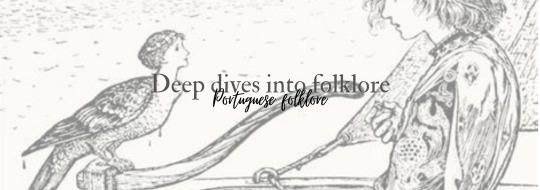
Portuguese folklore, a mesmerizing mosaic of myths and legends, serves as a profound testament to the cultural heritage of the nation. Woven over centuries, this intricate tapestry reflects the dynamic interplay of historical influences, blending the legacies of Phoenicians, Romans, Moors, Celts, and Christians. Rooted in a diverse historical landscape, Portuguese folklore encapsulates the essence of the country's identity, encapsulating the collective imagination of its people. As we embark on a deep dive into this mystical realm, we unveil the stories, characters, and cultural significance that have endured through the ages, illuminating the captivating spirit of Portugal's folklore.
Portuguese folklore has deep roots in the country's history, blending influences from various civilizations that have shaped the region over millennia. Phoenician, Roman, Moorish, and Celtic influences, among others, have contributed to the diverse range of myths and legends that make up Portugal's folklore.
One of the earliest influences on Portuguese folklore is the Roman presence in Lusitania. The Romans introduced their own deities and myths, blending with the existing indigenous beliefs. As Christianity took root in the region, a symbiotic relationship developed between pagan and Christian elements, resulting in a unique blend of folklore that reflects Portugal's cultural identity.
The Lusitanian Mythical Heritage:
Before Roman rule, the Lusitanians, an ancient Celtic people, had their own pantheon of deities and mythical beings. The god Bandua, associated with war and protection, and the goddess Ataegina, linked to fertility, are examples of Lusitanian figures that persisted in local folklore.
The Moura Encantada:
The Moura Encantada, or the Enchanted Moorish Maiden, is a prominent figure in Portuguese folklore. These mythical beings are often beautiful women with magical powers, dwelling in hidden places or trapped in enchantments. Stories of love, loss, and magical intervention surround the Moura Encantada, emphasizing themes of fate and destiny.
The Lobo Ibérico (Iberian Wolf):
Wolves hold a significant place in Portuguese folklore, symbolizing both danger and wisdom. The Lobo Ibérico is a recurring motif, representing the untamed wilderness and the struggle for survival. Folk tales often feature wolves as shape-shifters or mystical guardians, embodying the complex relationship between humans and nature.
The Barco da Roda (Wheelbarrow Boat):
Coastal regions of Portugal have tales of the Barco da Roda, a phantom boat that appears during storms. Believed to be a harbinger of doom, this spectral vessel is associated with the souls of the deceased. The folklore surrounding the Barco da Roda reflects the maritime culture and the inherent connection between the Portuguese people and the sea.
Portuguese folklore serves as a mirror reflecting the collective consciousness of the nation. It embodies the struggles, triumphs, and enduring spirit of the Portuguese people. The fusion of pagan and Christian elements in folklore illustrates the adaptive nature of Portugal's cultural identity.
Festivals and celebrations often incorporate folklore, with traditional dances, music, and costumes bringing mythical characters to life. The Feast of São João, celebrated across Portugal, features rituals and customs that trace their roots to ancient solstice celebrations, merging pre-Christian traditions with Christian elements.
In conclusion, Portuguese folklore is a captivating journey through the cultural tapestry of a nation. Its origins in diverse historical influences, the presence of mythical figures like the Moura Encantada and the Lobo Ibérico, and its cultural significance in festivals and celebrations all contribute to the richness of Portugal's folklore. Through the ages, these stories have been passed down, evolving and adapting while preserving the essence of Portugal's enchanting heritage.
Taglist (reply or reblog to be added): @axl-ul @crow-flower @thoughts-fromthevoid @alderwoodbooks @harleyacoincidence @tuberosumtater @sonic-spade @theonlygardenia @holymzogynybatman @nulliel-tres @w0rkah0licz @sylvanthorn @tigertaurus22 @profiterole-reads @mathias-musings @1899adgg1997tbmd @grimmparanormalinvestigations
#writeblr#writers of tumblr#writing#bookish#booklr#fantasy books#creative writing#book blog#ya fantasy books#ya books#deep dives into folklore#deep dives#folklore#mythology#portuguese#portuguese folklore
9 notes
·
View notes
Text

Miss Universe Portugal 2022 National Costume: Tricana Poveira
Tricana poveira is a traditional style of women's clothing from the Portuguese city of Póvoa de Varzim. This look, consisting of colorful costumes, was fashionable and mainstream from the 1920s to the 1960s. Women who dressed in the Tricana poveira style became known as tricana girls. During parades, tricanas from the six traditional quarters wear dresses in their neighborhood colors. Here she is wearing the blue and yellow colors of Barrio Norte
#miss universe#miss universe 2022#miss universe portugal#portugal#national costume#national costume contest#pageant
35 notes
·
View notes
Text
I couldn't attend at a small convention happening here this weekend but my friends bought me some stuff from an artist i love and the artist even offered an Ainosuke (sk8 the Infinity) print 😭. Literally all of the stuff i have of him is from them, their work is immaculate. They also have a lot of stuff with lots of Portuguese culture influence and its so so pretty and also inspiring. I'd love to make original stuff with traditional costumes from here some day....
3 notes
·
View notes
Note
orange for the color asks?
hi mattie!! thanks for the ask :)
what makes you feel warm inside?
talking to kids. whether it's a kid seeing me and going 'hey! u used to teach me!' or just one them excitedly rambling ab their day. i dunno just kids man they're so special <3
what’s your favorite halloween tradition?
uhh. things that would get me cancelled on tumblr ig but very much not a halloween man. thinking up costumes i would wear if i actually did anything for halloween is my favourite tradition probably
what’s the last thing you learned?
a new word for sexual intercourse in portuguese. thanks kitchen walls server
when’s the last time you felt obsessed?
very recently. when i saw this post. mick jagger <3333
what’s your favorite article of clothing?
ooh this is a hard one but i'd have to go with my forum 1s. they feel like my signature item at this point. they fit my vibe perfectly. it's been nearly a year since i bought them and i've worn them nearly every day. and they still make me so happy looking at them. this is what they look like btw

(i wear them without the strap tho. i think having the little hooks for the straps sticking out the side adds to the charm <3)
2 notes
·
View notes
Note
Oh ho ho, now I'm curious, do you have any refs for anyone that might want to draw your OCs? Pictures or specific descriptions or anything of that sort? Just curious...
Thank you for the ask! I'm so glad it interests you!!
Well You See: I'm an artist. I should have references lying around. But if I were to present them, it would be some super sporadic stuff bc I never got around to drawing MOST of my ocs, for some reason...
That being said, I have a few things lying around. I'll post it here and maybe update when I make more.
(Also, I know the digital drawings suck. I have 0 experience with it. I am Trying Very Hard)
This is gonna be Long, so buckle up.
Dystopia WIP:
This WIP was originally concieved at a graphic novel, so I have a few drawings - especially a few rough sketches mapping out outfit shapes and colours. Let's go through the main cast:
Veta, Vi and Veo (aka the Communist Polycule):

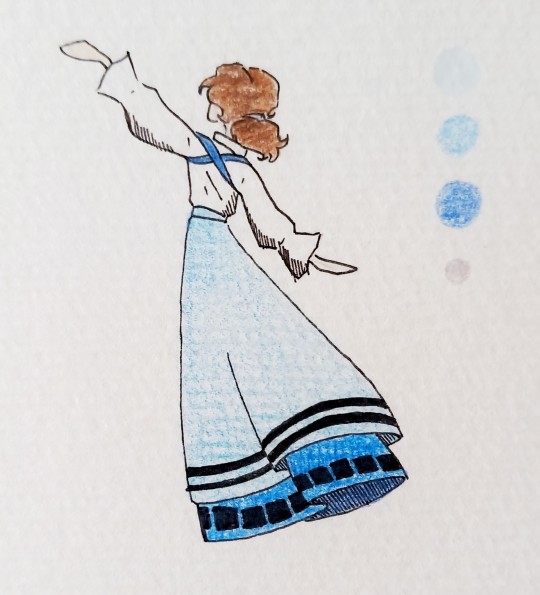
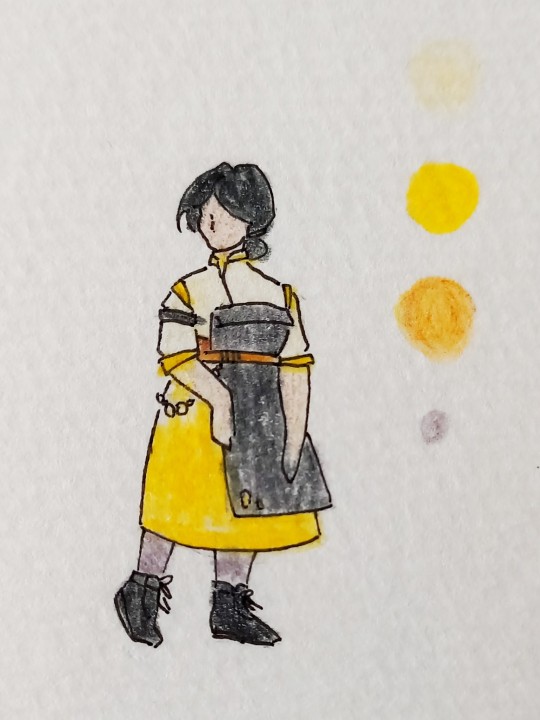
Veera:
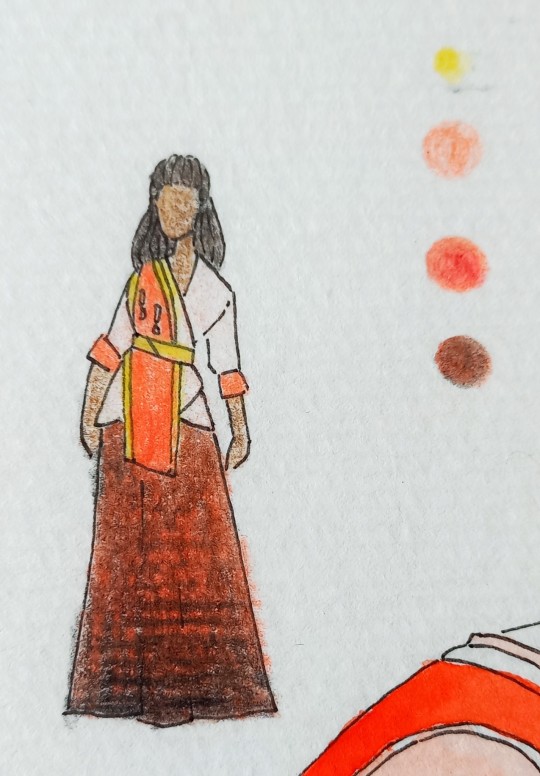

Alexis Ivanik:
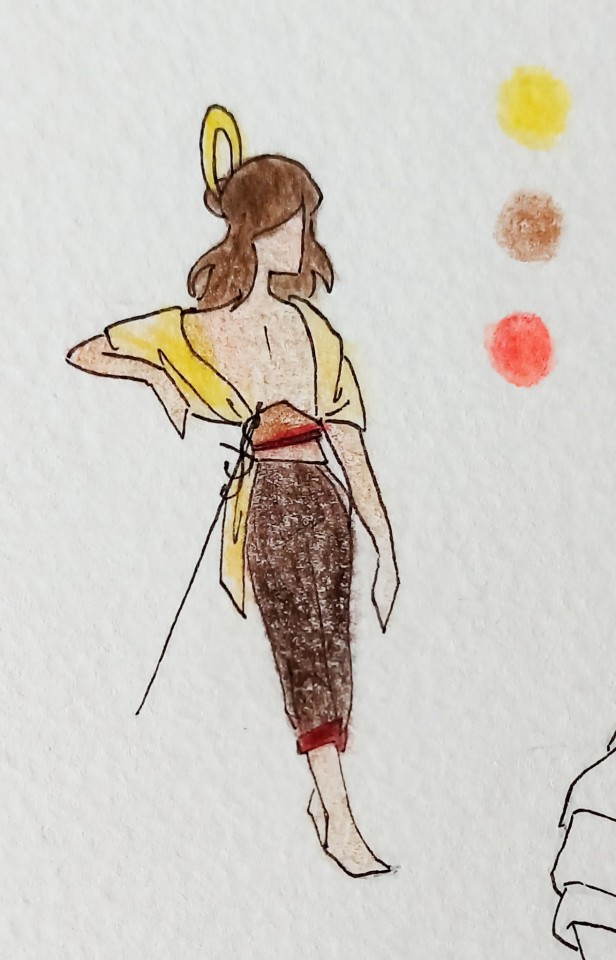

Cristover (left) and Nester Kalenev (right):

I have a post explaining the significance of most of the colour palettes of the 3 WIPs here
Notes on the characters:
Nester, Cristover, and Vi are all guys. They're wearing skirts bc they're Fashionable. Vi has a beard
Vi's outfits are inspired by traditional portuguese costume
idc what you do with Alexis, they NEED to be wearing extremely over-the-top eyeliner at all times
Devourer of Souls:
So here is the Thing. Most characters in this WIP being female is a very recent development. Almost all except for Flick used to be guys. So the only pic of Seth is her as a man. Literally just picture her with longer hair and it's almost accurate.
Seth (very zoomed into a drawing I once made):
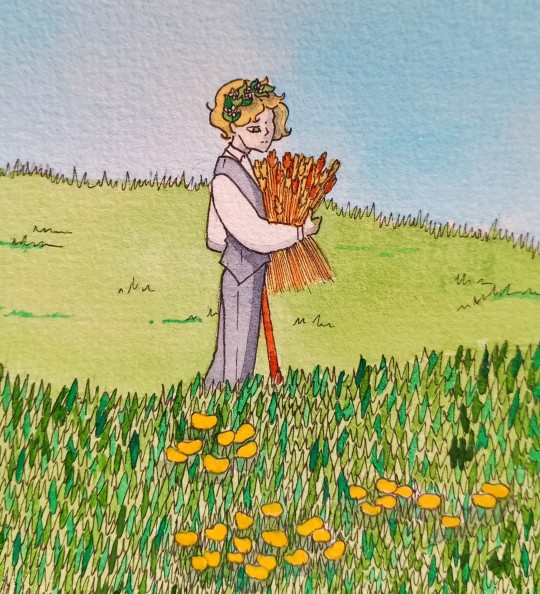
(pls don't forget that she's a cane user)
Flick (the people on the sides are Allana and Hunter, the two souls their body houses):
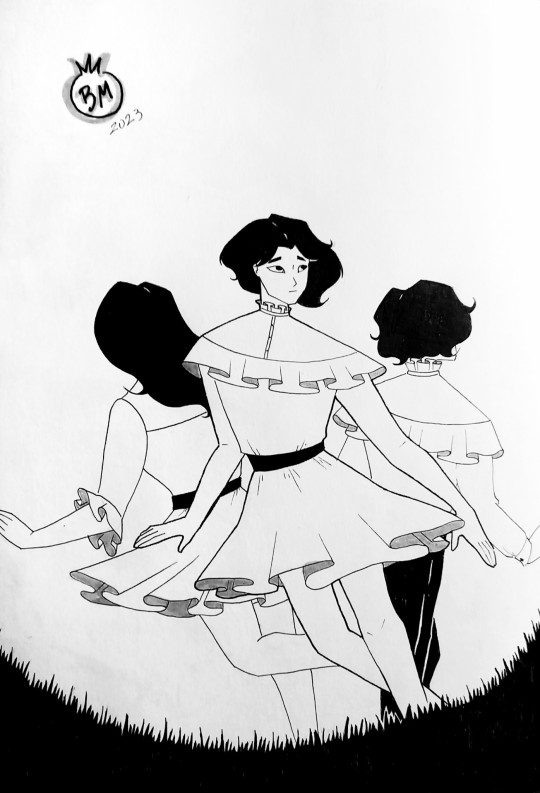
Notes on characters not pictured (Jane and Theo):
Theo and Jane are technically twins, and they have a Snow White/Rose Red motif
Theo has bright red eyes long white hair in a huge braid. She wears all white tends to prefer overalls
Jane has short red hair and white eyes, the inverse of Theo
Black and White
Considering this WIP is my main one and the one I've had the longest, I have shamefully little material on it that I like. And also, I've already reaches the limit on pictures I can post.
I mean, my icon is a drawing of Darius, and there's also the Great Reyna Picrew Show-Down, but otherwise? Almost nothing. When it comes to descriptions, it's kinda vague ig? But let me kinda compile a little bit. Here's the most relevant characters in order of appearance:
Johann:
[...] He was significantly older and dressed much more presentably. His deep black suit had a refined and expensive-looking cut. He carried an old walking stick, which might have been in fashion in the previous century, to complete the look. Besides that, he had a box-shaped camera hanging from his shoulder. His hair was almost completely grey and perfectly combed, which made him look organized and important.
When he walked closer, Darius noticed the strange shine in his eyes, his crooked nose, his lively smile. There was no doubt. He looked like all the pictures he'd seen. [...]
August:
He would almost be a perfectly normal person if not for his height. He wasn't a giant, but he had a considerable advantage over most people, although not at the expense of any muscle. His hair was longer than one would normally see in a man, almost shoulder-length. Otherwise, he looked pretty average, dressed in a half-opened shirt and very tight trousers. He couldn't decide if he should categorize him as "weird" or not.
Extra note: he wears a glove on his right hand that he never takes off. I once made a joke about the glove staying on during sex and it's 100% true.
Reyna:
[...] The girl was absolutely enormous. He'd never seen anyone so tall. She was taller than August, who was almost a giant himself. Even without heels, she was taller than anyone he'd ever met. And besides that, she was dressed quite scandalously. Her red dress barely reached the middle of her legs, leaving part of the knees exposed. The skirt was made of various layers of light fabrics, like chiffon and tule, all of them ending in excessive frills. It looked like a flower upside down. The dress had no sleeves, being held in place solely by two thin straps covered in glitter, reflecting the light of the sun. All of her seemed more suited to a burlesque show than a circus.
Diedrich:
His red hair, tied into a ponytail, fell down the side of his neck, like a small flame. He wore a crisp black suit, like any common man would. [...]
I can't believe I never actually described Diedrich. I know he's a POV character but still, wtf??
I mean, I guess there wouldn't be a point in describing him from Darius's or Reyna's POV because Darius spent years collecting pictures of him and Reyna has seen him every day for the past 5 years. But if you want an age range, he's 50 in the main story, just like Johann.
You know what? Hit me up if you want a drawing or better description. I'd be happy to do it for you, if you wanna actually draw him.
(if you're wondering why the descriptions are so weird about fabrics, it's because this is narrated by Darius and he's a tailor - he's really into sewing)
As for Darius himself, he's only ever described as "looking like Alphonse". And what does Alphonse look like, you ask? Johann describes him in relation to Diedrich (a description we don't have), and Diedrich feels no need to describe him because he's literally his son and he's known him since he was born. I need to fix this, holy shit.
Anyway, I hope this gave you better insight into how (some of) my ocs look! And I hope you had fun looking at sketches, zoomed-in pictures and 1 (one) fully fledged illustration of Flick.
Also, feel free to ask if you need more info! I can add it here to paint a more complete picture.
#this took WAY too long to compile#but it's nice#maybe I'll update it and make it a masterpost#who knows#writing#writeblr#my wips#black & wip#asks#the dystopia wip#devourer of souls wip#oc reference#my art#the images are behaving weirdly in the draft PLS HELP
8 notes
·
View notes
Text
The History and Traditions of the Rio Carnival in Brazil
The Rio Carnival in Brazil is one of the most famous and vibrant festivals in the world. With its colorful costumes, samba music, and energetic dancing, it is truly a spectacle to behold. But the origins of the Rio Carnival are deeply rooted in history and tradition.
The first recorded Carnival celebrations in Rio de Janeiro date back to the early 18th century, when Portuguese settlers brought…

View On WordPress
0 notes
Text
Unlocking the Treasures of Kerala: A Guide to Kerala Holiday Packages
Are you dreaming of palm-fringed beaches, tranquil backwaters, and lush greenery? Look no further than Kerala, often dubbed "God's Own Country" for its breathtaking natural beauty and rich cultural heritage. Kerala, a state in southern India, offers tourists of all ages a perfect blend of adventure, relaxation, and cultural experiences. And what better way to discover this fascinating place than with well-thought-out Kerala holiday packages?
Embark on a Journey of Discovery

Kerala holiday packages offer a comfortable way to enjoy each of this wonderful state's numerous sightseeing opportunities. There's something in Kerala for everyone, be it a history buff, a nature lover, or someone looking to get away from the bustle of the big metropolis.
Imagine taking a traditional houseboat ride around Alleppey's tranquil backwaters while taking in the beautiful villages and lush greenery. With well-chosen holiday packages, you may enjoy delicious Kerala meals made with fresh ingredients while immersing yourself in the tranquil rhythm of life on the waterways.
For those craving a beach getaway, Kerala boasts some of the most pristine stretches of coastline in the country. Every beach has its own unique atmosphere and leisure opportunities, from the beautiful beaches of Kovalam to the laid-back charm of Varkala. With Kerala holiday packages, you can unwind in luxury beach resorts or embark on thrilling water sports adventures, from surfing and snorkeling to catamaran rides.
Discover Cultural Treasures

Kerala is a cultural treasure trove that is just waiting to be discovered, beyond its stunning natural surroundings. The state's rich heritage can be seen wherever you look, from brilliant arts and crafts to old temples and colorful festivals.
Discover a mosaic of cultural influences when you visit Kochi's historic city, from its Portuguese and Dutch colonial buildings to the vibrant spice markets and unique art galleries. With Kerala tour packages, you can enjoy guided journeys that explore the fascinating history of the city and visit famous sites like the Chinese Fishing Nets and the Mattancherry Palace.
No trip to Kerala is complete without experiencing the timeless art of Kathakali, a traditional dance form that combines intricate movements with elaborate costumes and makeup. You may see amazing Kathakali performances by talented artists and learn about the customs and tales that have defined Kerala's cultural character by booking holiday packages specifically designed for cultural enthusiasts.
Seamless Travel Experiences
Convenience and peace of mind are two of the greatest advantages of choosing Kerala holiday packages. Everything is carefully planned to guarantee a perfect travel experience from beginning to end, from travel and accommodation to activities and guided tours.
Whether you're a solo traveler, a couple seeking a romantic retreat, or a family in search of adventure, there's a Kerala holiday package to suit your preferences and budget. With expertly planned itineraries and personalized service, you are able to relax and focus on making priceless memories as you discover the beauties of "God's Own Country."
In conclusion
Kerala holiday packages offer the best opportunity to experience the alluring beauty and unique culture of this fascinating destination. Experiences to treasure abound in Kerala, including vibrant festivals and historic landmarks to tranquil backwaters and golden beaches. So why wait? Embark on a journey of discovery and let Kerala weave its magic on you.
#india tourism#holiday package#india trip#tour and travel#tourism#kerala tourism#kerala tour package#Kerala holiday packages
0 notes
Text
Brazil 🇧🇷
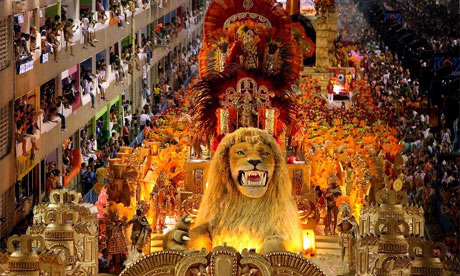
Tradition
Carnaval is a wild celebration of food, alcohol, music and fun. It's held annually for a few days before the start of Lent, the 40-day period of fasting, abstinence and repentance that's observed by the Roman Catholic Church before Easter. The word carnival comes from the Latin carne vale, or "farewell to the flesh"
The Portuguese brought the practice of Carnival to Brazil around 1850, patterning it mainly on the Parisian tradition of holding masquerade parties and balls at this time of the year. However, the Brazilians morphed it into a version uniquely their own over time, adding in elements from the people's African and indigenous cultural backgrounds.
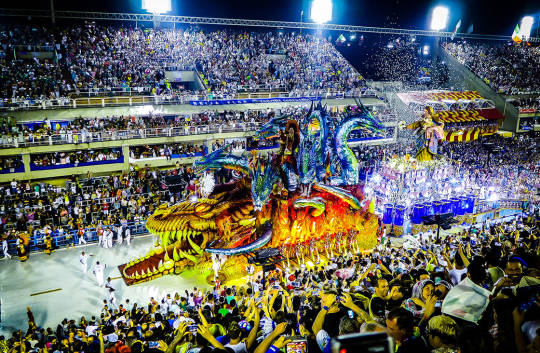
Thus, Carnival in Brazil eventually incorporated lots of parades, elaborate costumes, music, dancing and balls. A tradition also developed where people dress up in opposing roles: men dress as women, aristocrats dress as commoners, the poor dress as the rich.
Carnival is held all over the country; celebrations differ a bit by region, but Rio de Janeiro's celebration is the most popular, drawing crowds of 500,000 foreigners annually from across the globe.
While all Brazilians love Carnival, the black communities are its most avid participants. This likely stems from the community's historical love of Carnival, as African slaves were freed annually for the festival's duration.
Traditional outfits
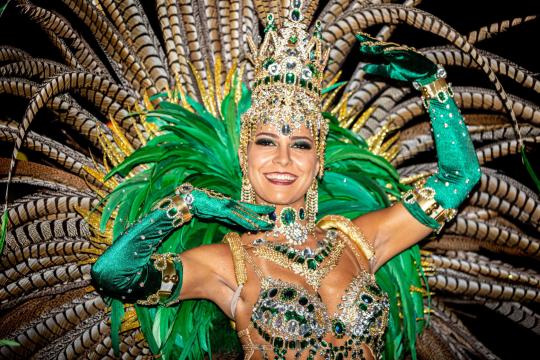
People wear the same types of clothes in many places of the world. Jeans and T-shirts are worn in most countries, replacing traditional garments. But for special occasions or celebrations, some people choose to bring back the memories of the past by wearing a traditional costume. While they don't wear it every day, Brazilians care about their traditional clothing and wear it for different occasions, such as carnivals or national celebrations.
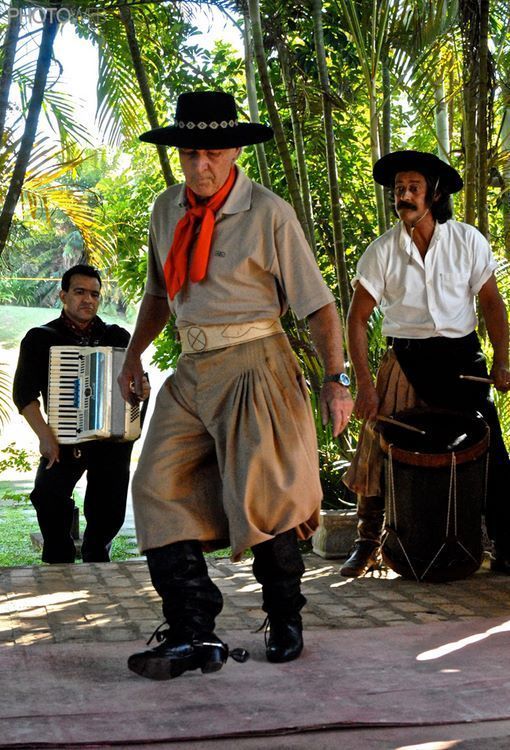
In general, Brazilians wear clothing that's comfortable yet richly colored and sophisticated. However, there are some preferred clothing types depending on region.
For example, those living in the southern plains, a ranching area, wear gaucho-type clothing: baggy pants, or bombachas; cowboy hats and cowboy boots.

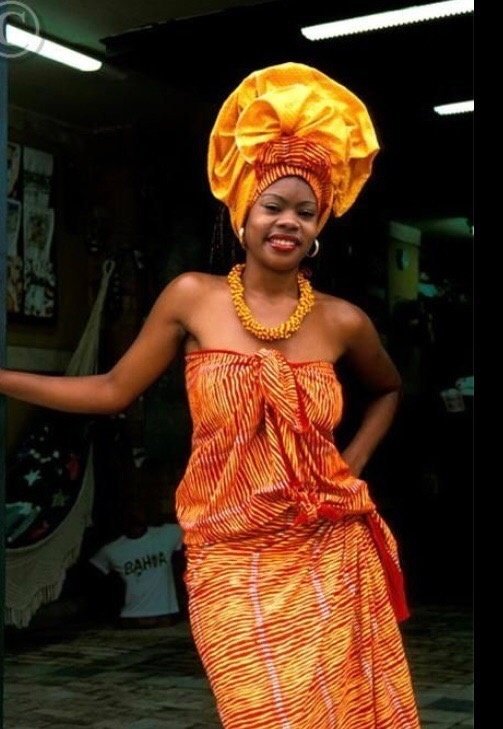
People in the country's northeastern Bahia region, which is heavily influenced by African culture, don long skirts, head scarves and shawls. Items adorned with bordado richelieu -- a type of lace developed in 18th-century France to mimic white Venetian lace, which was brought to Brazil by the Portuguese -- are also popular
Another way to consider Brazilian clothing is country attire versus city attire. Those who live in the country tend to wear shirts, jeans or dresses crafted from an inexpensive cotton material. Women who reside in the city often like to wear short skirts and dresses, and both sexes of city slickers enjoy that most typical of Western attire: T-shirts and jeans.
Statue of Christ the Redeemer.
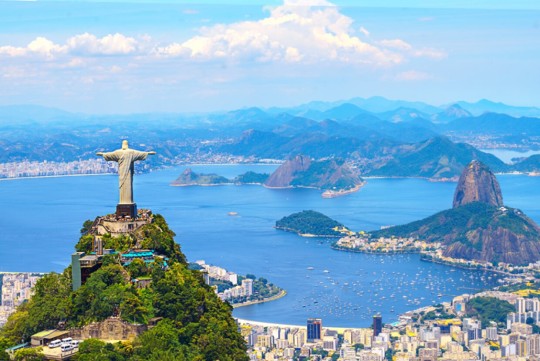
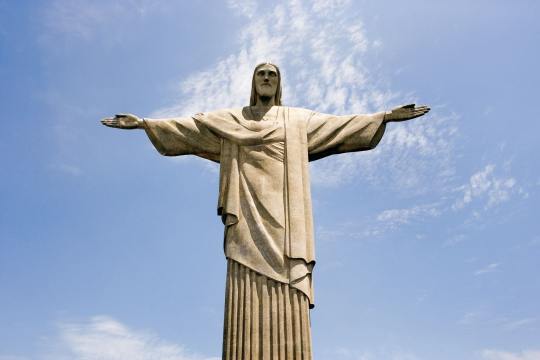
Towering 2,310 feet above the city of Rio, the Christ the Redeemer statue has fascinated experts and historians for nearly a hundred years.
This landmark is must-see in any visit or free tour around Rio, and for good reasons! It’s the fourth largest statue of Jesus Christ in the world, the largest Art Deco-style sculpture on the planet, and to top it all off, in 2007 the statue was deemed as one of the New Seven Wonders of the World along with Machu Picchu, the Great Wall of China and the Roman Colosseum.
Perched on the summit of Mount Corcovado in Rio, the statue stands at a whopping 98 feet (or 30 metres) tall (making it two-thirds the height of New York’s Statue of Liberty), and its outstretched arms reach to 92 feet (or 28 metres) horizontally.
The idea of designing a massive statue of Jesus Christ in Rio first came about way back in the 1850s, when a local priest came up with the idea of placing a Christian monument on top of Mount Corcovado. Apparently he had requested Princess Isabel (the daughter of Emperor Pedro II and Princess Regent of Brazil at the time), to fund the project, but the idea was scrapped after a Declaration of the Republic was declared in Brazil in 1889 – a pinnacle move as it separated the church from the state in the country.
Traditional food
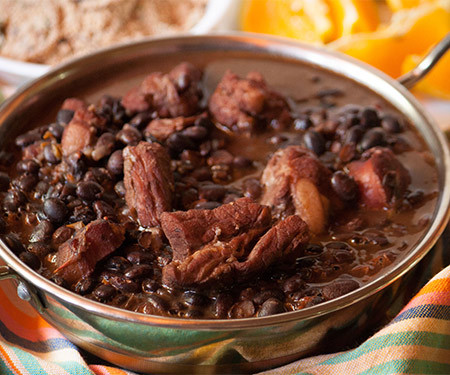
Feijoada.- Brazilian Feijoada is a black bean and pork stew that Brazilians often serve topped with farofa, toasted cassava flour. Many call this comfort food the national dish of Brazil.
Feijoada, a popular Brazilian dish, owes its name to its main ingredient, black beans (feijão). It is a rich stew traditionally made from different parts of the pig, such as feet, ears, and bacon, as well as other smoked meats.
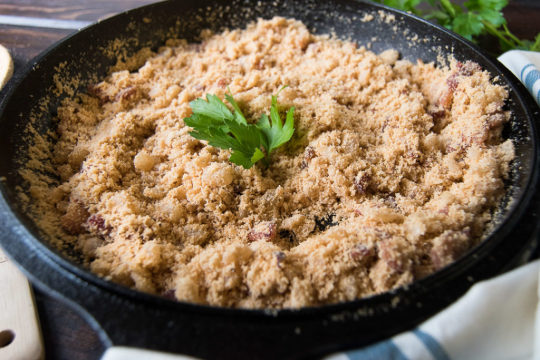
Farofa.- farofa is particularly popular, typical recipes call for raw cassava flour to be toasted with abundant butter, vegetable oil or olive oil, salt, bacon, onions, garlic, sausage, or olives until golden brown.
Farofa is served alongside the main course and can either be sprinkled on by individual diners to their taste before eating, or eaten as an accompaniment in its own right, as rice is often consumed

Moqueca de Camarão.- Brazilian prawn coconut stew (moqueca de camarao) is an easy and delicious low-carb recipe that features a unique combination of spices.
As with many recipes of this kind, you'll find lots of variations for moqueca de camarao, but all of them are loaded with prawns, tomatoes, chillies, garlic, coconut milk, and lime juice.
Vatapá- Brazilian dish made from bread, shrimp, coconut milk, finely ground peanuts and palm oil mashed into a creamy paste. It is a typical food of Salvador, Bahia and it is also common to the North and Northeast regions of Brazil
Acarajé-The crispy bean and onion cakes (acarajé) are stuffed with a flavourful vatapá - a popular Brazillian mix of shrimp, crab, nuts and coconut milk.
Dixon, R. (2018). What Are Some Traditional Clothes Brazilians Wear? | Synonym. [online] Synonym.com. Available at: https://classroom.synonym.com/what-are-some-traditional-clothes-brazilians-wear-12079370.html.
[email protected] (2023). The Story Behind Rio’s Christ the Redeemer Statue | Strawberry Tours. [online] ONEPORT. Available at: https://strawberrytours.com/the-story-behind-rio-s-christ-the-redeemer-statue.
0 notes
Text
Carnival in Goa – Enjoy Cultural Exuberance of Goa at its Best

The Carnival in Goa is a vibrant and exuberant celebration that encapsulates the spirit and culture of this coastal paradise. With a rich history dating back centuries, the Goa Carnival has evolved into a kaleidoscope of colors, music, and dance, attracting revelers from around the world. In this comprehensive exploration, we will delve into the origins, evolution, and significance of the Goa Carnival, shedding light on its unique traditions, duration, and the diverse activities that make it a must-attend event.
Historical Roots: The roots of the Goa Carnival can be traced back to the Portuguese colonial era. When the Portuguese arrived in Goa in the 16th century, they brought with them a rich tradition of pre-Lenten festivities. The Carnival in Goa was initially a Catholic celebration, mirroring the elaborate carnivals held in Portugal. Over the years, it assimilated local flavors and cultural elements, becoming a truly Goan extravaganza.
Evolution and Fusion: As Goa transitioned from a Portuguese colony to an Indian state in 1961, the Carnival underwent a transformation. Embracing the cultural diversity of the region, the celebration became more inclusive, incorporating elements from Hindu festivals, Konkani traditions, and the vibrant local music scene. Today, the Goa Carnival stands as a harmonious blend of various cultural influences, a testament to the syncretic nature of Goan society.
Duration: The Goa Carnival is a multi-day extravaganza that typically takes place in the weeks leading up to Lent. The exact dates vary each year, as they are determined by the Christian liturgical calendar. However, the festivities usually commence in February and extend for three to four days, culminating on Fat Tuesday, also known as Shrove Tuesday or Mardi Gras.
Significance: The Goa Carnival holds immense cultural and religious significance for the local population. It marks the last opportunity for revelry and indulgence before the solemn period of Lent, a time of fasting, repentance, and reflection for Christians. Beyond its religious connotations, the Carnival has become a symbol of Goa's vibrant and inclusive culture, drawing people of all backgrounds to partake in the joyous celebrations.
Activities and Celebrations: The Goa Carnival is a riot of colors, music, dance, and elaborate parades. The streets come alive with processions featuring intricately designed floats, depicting scenes from mythology, history, and contemporary life. These floats, adorned with flowers, lights, and vibrant decorations, are a visual spectacle that captivates both locals and tourists. One of the highlights of the Carnival is the King Momo procession. King Momo, a mythical figure, is said to preside over the festivities and symbolizes the spirit of revelry. Dressed in elaborate costumes, King Momo leads the grand parade, setting the tone for the merriment that follows.
Music is an integral part of the Goa Carnival, with lively performances by local bands, traditional folk musicians, and dance troupes. The rhythm of Konkani music, coupled with the beats of traditional instruments like the dhol and the ghumot, fills the air, creating an infectious energy that permeates the entire celebration. Dance is another key element, with the streets transforming into impromptu dance floors. The Carnival sees a medley of dance forms, from the traditional Dekhnni and Fugdi to contemporary styles like Samba and Carnival Swing. Locals and visitors alike join in the revelry, moving to the infectious tunes that echo through the streets.
The streets are lined with food stalls offering a plethora of Goan delicacies and international cuisines. From traditional fish curries to carnival-inspired sweet treats, the culinary offerings add a flavorful dimension to the festivities. The intoxicating aroma of spices and the sizzle of street food create an enticing culinary experience.
Local Customs and Traditions: While the Goa Carnival has embraced a diverse range of influences, it still retains some traditional customs and rituals. The tradition of 'holi,' where revelers playfully smear each other with colored powders, is a nod to Hindu festivities. It reflects the inclusive nature of the celebration, where people of different faiths come together to celebrate joy and unity. The tradition of wearing masks during the Carnival has its roots in the Venetian Carnivals and symbolizes a temporary escape from reality. Masks are intricately designed, adding an element of mystery and fantasy to the festivities. The anonymity provided by masks encourages people to let loose and fully immerse themselves in the celebration.
Tourist Attractions: The Goa Carnival has gained international acclaim and has become a major tourist attraction. Visitors from around the globe flock to Goa to witness and participate in the festivities. The vibrant atmosphere, cultural diversity, and the opportunity to experience a unique blend of traditions make the Goa Carnival a must-see for those seeking an authentic and immersive cultural experience. Tourists can not only enjoy the grand parades and musical performances but also participate in various events and competitions organized during the Carnival. From masquerade balls to street parties, the Carnival offers a range of activities that cater to diverse interests.
Impact on the Local Economy: The Goa Carnival is not only a cultural extravaganza but also a significant economic driver for the region. The influx of tourists during the Carnival season boosts the local economy, benefiting businesses such as hotels, restaurants, and souvenir shops. The event also provides a platform for local artisans and performers to showcase their talents, contributing to the cultural and economic vibrancy of the community.
Challenges and Conservation Efforts: While the Goa Carnival is celebrated with great enthusiasm, it also faces challenges, particularly in terms of environmental impact. The use of non-biodegradable materials in the construction of floats and excessive waste generated during the festivities has raised concerns about environmental sustainability. In response, there have been efforts to promote eco-friendly practices, encouraging the use of recyclable materials and waste management initiatives to minimize the ecological footprint of the Carnival.
The Goa Carnival stands as a testament to the resilience and adaptability of cultural traditions. From its humble beginnings as a Portuguese-influenced Catholic celebration, it has evolved into a truly Goan spectacle that transcends religious and cultural boundaries. The fusion of diverse influences, vibrant parades, lively music, and inclusive spirit make the Goa Carnival a celebration like no other. As the sun sets on the final day of the Carnival, the echoes of music, laughter, and celebration linger in the air. The legacy of the Goa Carnival endures, weaving together the threads of history, tradition, and modernity into a tapestry of cultural richness. In the heart of Goa, the spirit of the Carnival lives on. Optima Travels invites all to join in the revelry and experience the magic of this extraordinary celebration.
0 notes
Text
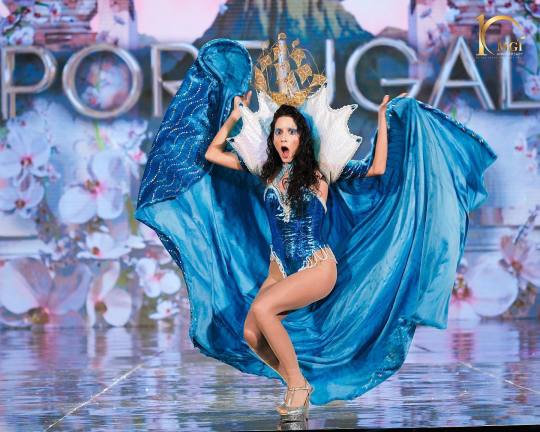
Miss Grand Portugal 2022 National Costume
My national costume is a representation of the Tagus nymphs, called "Tágides" by André Resende and popularized by our greatest poet and father of the Portuguese language: Luís Vaz de Camões. Famous for being the Portuguese Shakespeare. He wrote the national epic "Os Lusíadas" back in the sixteenth century when these mythological creatures would inspire him to write down the biggest achievements of the Portuguese people.
The epopee describes in verse Vasco da Gama's trip to India across the oceans. It was the first time such trip happened and the Portuguese navigators where pioneers to the discoveries.
Camões asks on behalf of the Portuguese people protection of the nymphs and asks for strength to overcome the dangers they might face alone in the ocean (induction of the church in saying that the ocean is where the world ended and monstrous beings existed there) and with delight to the nymphs they will spread the great deed with reference to the muses.
The traditional Portuguese ship named Caravela Portuguesa (part of my national costume) is still today a symbol for this period in Portuguese history.
The epic poem talks about the Lusitanian history regarding the conquests of African colonies and some in Asia, showing the great power of the Portuguese who valued their great Kings and when great warriors died in battles.
The "Tágides" live in the Tagus river by Lisbon, our beautiful capital, and 450 years later they're protecting me in this journey to Miss Grand International 2022 held in Indonesia, therefore I am bringing you a bit of my country - Portugal - with the reference to them :)
#miss grand international 2022#miss grand international#she put a lot of effort into the description so I figured I'd share it#idk if this is the relationship between portugal and indonesia you want to be emphasizing though...#national costume contest#miss grand portugal#pageant
21 notes
·
View notes
